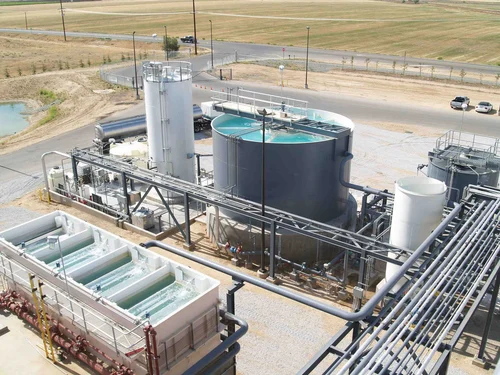A water treatment plant is an amenity where waste and contaminated water is treated for making it reusable. Different techniques are used by different water plants to purify polluted water, such as filtration, sedimentation, disinfection, and chlorination. Moreover, some typical water purification equipment used in such plants include screening equipment, oil water separators, water filters, sludge treatment equipment, ozone generator, etc.
Let us now see various applications of such a treatment plant.
1. Wastewater Treatment
Treating wastewater collected from the industrial, commercial and household structures is the most usual application of a water treatment plant. The physical, chemical, biological and radioactive pollutants are removed that are present in the wastewater. Two commonly used treatment processes followed here are sludge treatment and sewage treatment.
2. Surface treatment
This process may be followed by a plant to cleanse ZERO LIQUID DISCHARGE SYSTEM surface water for municipal usage. In this process, the colloidal matters, organic components and suspended impurities present in the surface water are usually removed using treatment processes like screening, aeration, sedimentation, sand filtration and disinfection.
3. Containerized plants
Usually, such plants are useful for the remote areas of a country where getting pollutant-free water may seem like a luxury. However, they may also be established near mining or military camps. A single unit arrangement may be used in this type of water treatment plants.
4. Ozone-based plants
Ozone is used for the purpose of water purification in ozone-based water plants. These plants are considered to be useful for treating pool water. Ozone is an effective disinfectant for different microorganisms, such as protozoan and cryptosporidium parasites. This type of plants does not require any usage of chemical to clean polluted water.
5. Seawater treatment plants
These plants help treat seawater that contains salt and minerals. A few water treatment techniques followed by these plants are membrane separation, desalination and vacuum freezing. The USA has the highest number of seawater treatment plants in the world.
6. Package wastewater plants
The aeration process is usually used in a package wastewater plant. These plants are commonly seen in construction sites, educational sites, recreational sites and mining areas.
7. Mobile water treatment
This is a popular treatment facility offered by some water treatment companies where the reverse osmosis process is often followed. This is usually used in small scale in both rural and urban areas.
8. Bottled treatment
In this treatment, the water is collected from a certain source, sometimes even from deep under the sea; and then it is purified with high-end technology and machinery, and bottled to supply to the marketplace. The usage of bottled drinking water is rising day by day and so the number of bottled water treatment plants is also increasing in every corner of the world.


